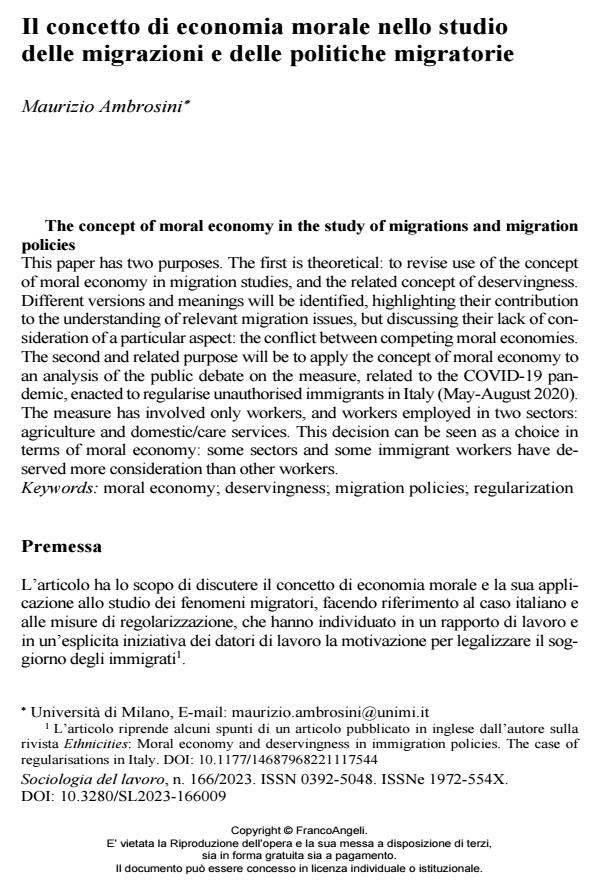Il concetto di economia morale nello studio delle migrazioni e delle politiche migratorie
Titolo Rivista SOCIOLOGIA DEL LAVORO
Autori/Curatori Maurizio Ambrosini
Anno di pubblicazione 2023 Fascicolo 2023/166
Lingua Italiano Numero pagine 16 P. 203-218 Dimensione file 227 KB
DOI 10.3280/SL2023-166009
Il DOI è il codice a barre della proprietà intellettuale: per saperne di più
clicca qui
Qui sotto puoi vedere in anteprima la prima pagina di questo articolo.
Se questo articolo ti interessa, lo puoi acquistare (e scaricare in formato pdf) seguendo le facili indicazioni per acquistare il download credit. Acquista Download Credits per scaricare questo Articolo in formato PDF

FrancoAngeli è membro della Publishers International Linking Association, Inc (PILA)associazione indipendente e non profit per facilitare (attraverso i servizi tecnologici implementati da CrossRef.org) l’accesso degli studiosi ai contenuti digitali nelle pubblicazioni professionali e scientifiche
This paper has two purposes. The first is theoretical: to revise the use of the concept of moral economy in migration studies, and the related concept of deservingness. Different versions and meanings will be identified, highlighting their contribution to the understanding of rele-vant migration issues, but discussing their lack of consideration of a particular aspect: the conflict between competing moral economies. The second and related purpose will be to apply the concept of moral economy to an analysis of the public debate on the measure, related to the COVID-19 pandemic, enacted to regularise unauthorised immi-grants in Italy (May-August 2020). The measure has involved only workers, and workers employed in two sectors: agriculture and domes-tic/care services. This decision can be seen as a choice in terms of moral economy: some sectors and some immigrant workers have de-served more consideration than other workers.
Parole chiave:moral economy; deservingness; migration policies; regulari-zation
Maurizio Ambrosini, Il concetto di economia morale nello studio delle migrazioni e delle politiche migratorie in "SOCIOLOGIA DEL LAVORO " 166/2023, pp 203-218, DOI: 10.3280/SL2023-166009